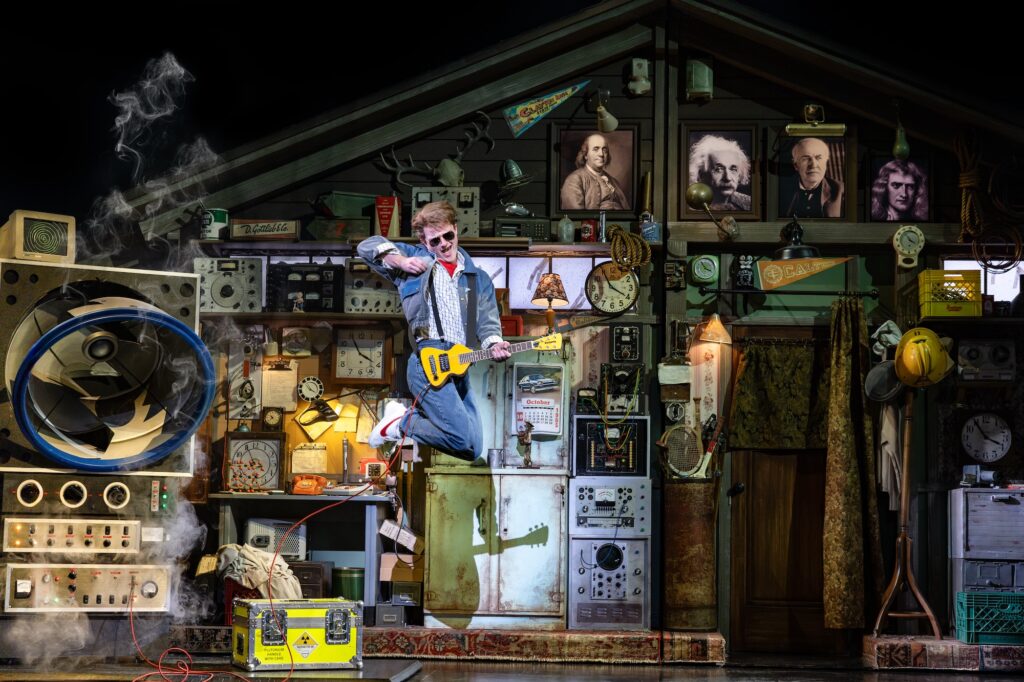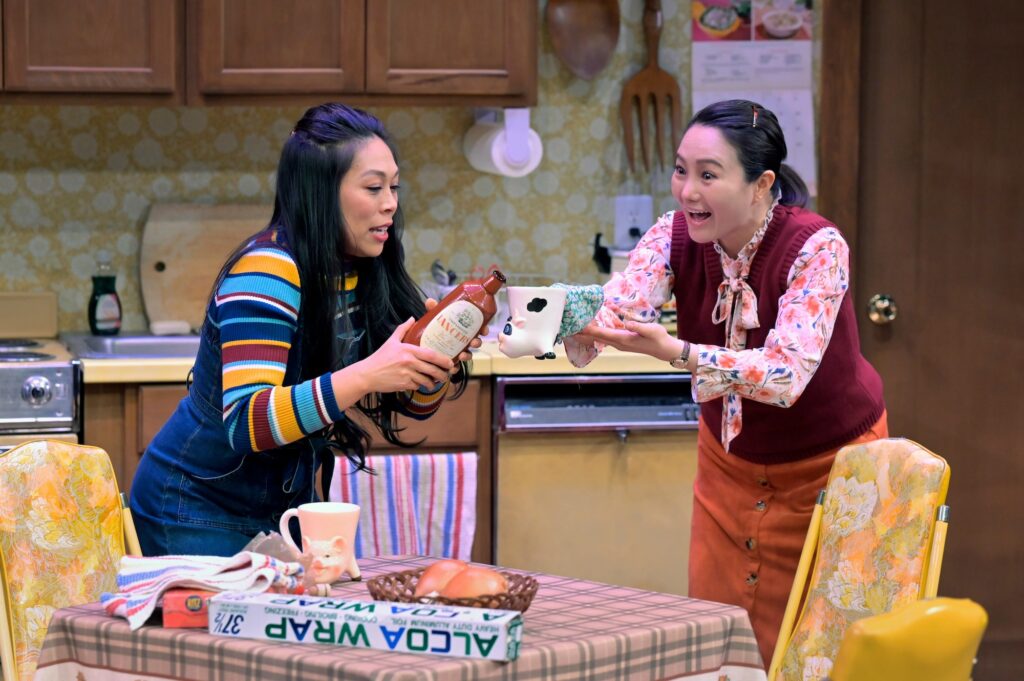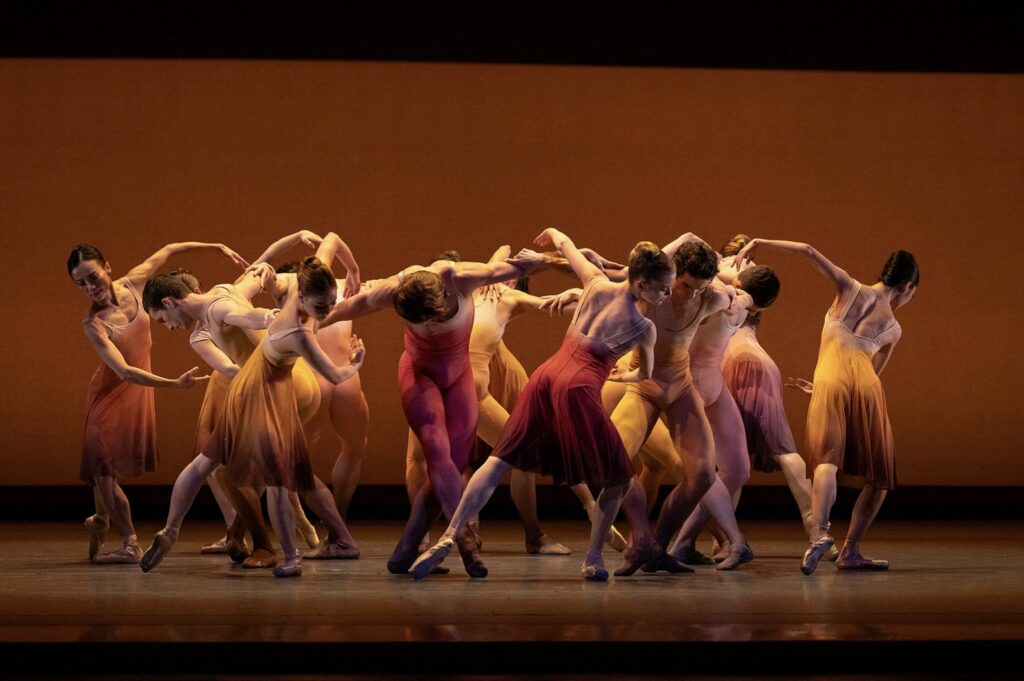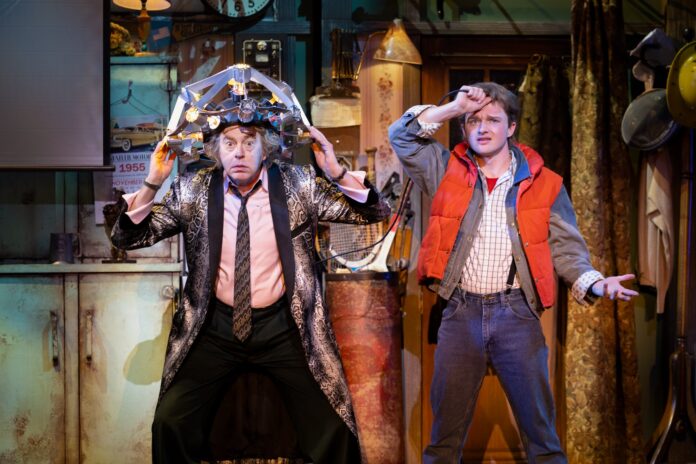This is Drama Masks, a Bay Area performing arts column from a born San Franciscan and longtime theatre artist in an N95 mask. I talk venue safety and dramatic substance, or the lack thereof.
As I spent the very busy past week seeing shows, I wondered whether entertainment fails if it doesn’t succeed in its escapism? Does it come up short when it doesn’t take your mind off the burning world around you?
Everyone loves comfort food, but a meal isn’t a waste just because you still remember your responsibilities. Entertainment lets us hold onto whatever joy we can find in cruel world. True, it can serve the cruel interests of the oppressor, but it can also inspire one to take positive action.
The shows I saw last week ran the gamut of fluff to enlightenment. In every case, they served a particular entertainment need.

BACK TO THE FUTURE: THE MUSICAL AT THE ORPHEUM
Granted, there are a few good things about Back to the Future: The Musical (through March 9 at the Orpheum Theatre, SF): it brought out the Marty McFly cosplayers en masse; it tried to address the poorly-aged aspects of its source material (no Libyans); and it’s blessed with a visual design by Tim Hatley that actually makes the pre-show and intermission pretty easy on the eyes. Plus, the Orpheum’s HVAC kept my Aranet4’s CO² readings no higher than 813ppm the entire show.
Unfortunately, the very things that should work in show’s favor work against it. The problem with adapting songs everyone (at least over 40) knows like “Back in Time” and “Power of Love” is that it’s obvious when you’ve skipped lyrics or simply don’t have the charisma of the original vocalist. The musical is longer than its inspiration, but still compresses it down with instantly forgettable tunes—the ones that aren’t the Huey Lewis originals—and scenery-chewing that wouldn’t swing with walkaround characters at Universal Studios.
Sure, there are cute little Easter eggs for super-fans (they incorporate the deleted cigarette advert and give a few timeline-jumping nods to the second film), but the show ultimately serves as a pale imitation of the classic flick. When the highlight of opening night was a lobby photo op with an actual DeLorean, you know you’re in trouble.
BACK TO THE FUTURE: THE MUSICAL runs through March 9 at the Orpheum Theatre, SF. Tickets and further info here.

THE HEART SELLERS AT AURORA THEATRE
I imagine that immigration-focused stories such as this were chosen in the last year or so with the hopes that they’d be staged during a time more celebratory of this nation’s history of diversity and growth. Who knew that they’d serve as dramatic testaments as to why so many immigrants currently live in fear? What makes The Heart Sellers (Northern California premiere through March 9 at Aurora Theatre, Berkeley) even sadder is the way it shows just how little progress the US has made in five decades.
The title alludes to the Hart-Cellar Immigration Act of 1965, which lifted country-of-origin quotas, allowing for a greater influx of arrivals from Europe and Asia. Our story finds us in the 1970s on that most hypocritical of American holidays: Thanksgiving. Energetic pinay Luna (Nicole Javier) is all too eager to welcome mild-mannered Korean Jane (Wonjung Kim) into her apartment since both of their husbands are busy doing the work from which their colleagues got the day off. After some adjustment (and a lot of cheap wine), the women try their best to cook a frozen turkey—“like Julia Child”—and keep their cool as their well-honed manners give way to simmering frustrations about being stuck in a country full of strangers who are all pissed about Viet Nam.
There’s no revelation, so to speak, in Lloyd Suh’s script. There’s no reinvention of the wheel or particular insight that hasn’t already been found. If anything, it’s unique in that one is hard-pressed to think of a story with Philippine and Korean women leads, and there’s a lot of amusement in looking at Thanksgiving from the perspective of someone who didn’t grow up with it. Add to that a pair of spot-on performances, and the biggest benefit to the show: the timing of the production. It’s a story about how, as progressive as Hart-Cellar was, real immigration reform (as with any reform) comes from treating people as people rather than numbers. That the production goes up when our government regards recently arrived humans as an infestation is sadly appropriate.
I saw the show after opening night, with a slightly reduced crowd. As such, my Aranet4 peaked around only1,217ppm during the 90-min. show, which is pretty low for an Aurora production. The audience that night (which, as expected, leaned older and white) seemed uncomfortable with the show’s reflection of the reality outside the theatre doors. Hopefully, it inspired enough of them to move for active change. We don’t need current policy to exist a few years from now, let alone half-a-century.
THE HEART SELLERS’ Northern California premiere runs through March 9 at Aurora Theatre, Berkeley. Tickets and further info here.

COOL BRITANNIA AT SF BALLET
It was fine enough to return to the SF Ballet and not encounter certain toxic individuals as I reveled in my Aranet4 hovering around 559ppm the whole show. That was cool, but the addition of a triptych of short ballets with visually stunning set and costume design, plus excellent work by the Ballet orchestra delivering a score that ranged from ’00s White Stripes garage rock to contemporary serialism and vinyl-crackling samples, didn’t hurt either.
Cool Britannia (through February 19 at the War Memorial Opera House, SF) is an engaging and at times exciting exhibition of recent choreography—the flitting and acrobatic Chroma by Sir Wayne McGregor, Christopher Wheeldon’s ravishing eye-candy Within the Golden Hour, and Akram Khan’s movingly abstract Dust—nothing larger. Sure, Khan’s haunting reflection on the costs of World War I, which wowed into silence the massive crowd at UK’s Glastonbury music festival, has the clearest remnants of a story (and is staged in a sort of Dune-like futurescape that’s infinitely more interesting than the new and overrated Dune films). But the show as a whole exists for the pure sake of showing some of the country’s most talented dancers performing for an audience willing to take in a broader scope of balletic movement.
What any of that has to do with the ’80s New Wave hits played from a Beatles-style mini-stage and red phone boxes in lobby, I can’t say? Yes, all three pieces were choreographed by Brits, but there’s hardly anything distinctively British about any of the pieces, except perhaps that singular obsession with World War I. It would be akin to knowing that Ballet’s next@90 festival focuses on Bay Area choreographers, so you fill the lobby with VW buses and people dressed as stereotypical hippies.
In any case, the show is a wonderful-looking and -sounding collection that adds to AD Tamara Rojas’ energetic, Brit-heavy season of the SF Ballet.
COOL BRITANNIA runs through February 19 at the War Memorial Opera House, SF. Tickets and further info here.

FROGGY AT CENTER REP
Many older critics easily fall into the trap of disregarding video game adaptations. They’ll either scoff at the idea of adapting something so “trivial” (as they did for the brilliant film version of board game Clue) or they’ll say that the adaptation was doomed to fail because it took away the interactive element that defines the format. The former dismisses video games as a storytelling format and the latter suggests gamers are too stupid to get involved with those stories anyway. Obviously, both are untrue. A video game adaptation succeeds or fails on the basis of translating a story built for one medium onto another.
Jennifer Haley’s FROGGY (world premiere through March 2 at Lescher Center for the Arts) isn’t a video game adaptation, but does incorporate gaming into its story to the point where one isn’t meant to tell what counts as the real world and what exists in the mind of the eponymous lead—played as an adult by the always-great Jamella Cross, as a child by Maeve Coyne, and as a narrative voice by Emily Newsome. The story follows our broken-home lead as she tries to find her actor boyfriend (Adam KuveNiemann) who went missing after recording audio for a new game.
Had Haley stuck to the intriguing premise and wacky merging of the game world and real world, the play would at least have a hook that works in its favor. What’s more, the use of live foley work (which the audience can see) is worth price of admission, as is the Lescher’s HVAC peaking my Aranet4 at about 1,001ppm. Unfortunately, the longer the play goes on, the more serious it takes itself; eventually devolving into an overwrought drama about suicide and abandonment that doesn’t fit with the lighthearted story at the beginning. It takes a hard-left for pure shock value and the numbed audience is all the poorer for it.
Yes, video games are a legit storytelling medium as well as an escapist sport. Yes, the trigger-warning topic of suicide is one that—like all mental health issues—should be tackled on a larger scale, with a greater emphasis on delicate care. But Haley’s play puts them together “just because”, not to make any decipherable point. It’s a creative exercise by Center Rep AD Matt Morrow, but the play is so busy shouting its importance that it never justifies its existence.
FROGGY’s world premiere runs through March 2 at the Lescher Center for the Arts, Walnut Creek. Tickets and further info here.





